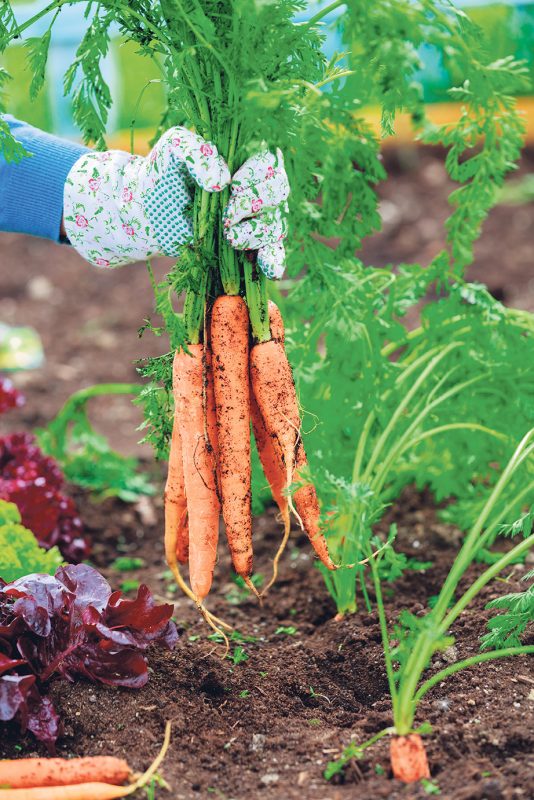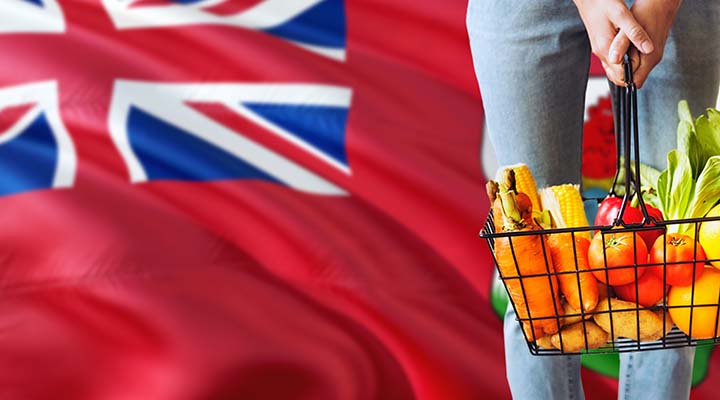Biodiversity & Our Food Security
by Jonathan Starling
May 22nd is the International Day for Biological Diversity that commemorates the 1992 UN Earth Summit which sought to launch international cooperation to address global sustainability issues – outcomes of this summit were the Convention on Biological Diversity, the Climate Change Convention, the Convention to Combat Desertification, the Rio Declaration on Environment and Development, Agenda 21 (an action plan for sustainable development) and the Forest Principles (for sustainable forestry).
Each year there is a different theme for the day that helps to raise awareness and coordinate activities and policy focus. The theme for 2019 is: ‘Our Biodiversity, Our Food, Our Health’.
What’s biodiversity got to do with food and health?
Biodiversity is crucial for our food security and overall health. Our agriculture is dependent on a diversity of plants, insects, habitats such as seagrasses, mangroves and coral reefs as well as the soil microorganisms and the genetic diversity of crop and livestock species.
Healthy seagrass meadows, mangroves and coral reefs are key for our local fisheries, providing not just habitats for shellfish and fish, but also key breeding grounds and nurseries for important seafood species. And just as importantly is the need for ensuring a healthy and diverse population of other animals that play key supporting roles in maintaining healthy marine ecosystems – the parrotfish for example help graze the reef to ensure healthy coral populations, healthy stocks of groupers (rockfish) and other predatory fish keep prey populations in balance, and their loss cause trophic (nutritional) cascades through the food web with unexpected consequences, often leading to a collapse of fisheries in the long-term. Which means a loss of local food security (local seafood) and jobs. Not to mention other problems such as erosion and storm damage increasing from the loss of healthy reefs, seagrasses and mangroves.
While our grocery stores may have more food options than even a few decades ago, over the last 100 years more than 90 percent of crop varieties have disappeared from global agriculture. Half of all breeds of many domestic animals have been lost, and all of Earth’s seventeen main fishing grounds are assessed as being overfished, beyond their sustainable limits. At the same time, the loss of local food production in Bermuda – in 1921 3,000 acres of farmland; in 1977 the number was just 600 acres; in 2010 only 360 acres of land was being actively used – has meant a loss of traditional and local knowledge of medicine, foods and skills, as well as radically changing the landscape of our island and increasing our dependence on food imports – undermining our national food security.
From an economic perspective, dependence on food imports translates into a loss of hard currency (economic leakages) from Bermuda and increasing our vulnerability to threats to our supply lines. A natural disaster affecting the USA’s eastern seaboard, or a shipping accident to our main cargo ship, or even international tensions could quickly lead to extreme food shortages for Bermudians. Our current agriculture cannot provide for all our needs. This is not new. In the 1981 book Bermuda’s Delicate Balance it was calculated we could at best produce enough food for a quarter of our needs – and that was with twice the amount of farmland than we have today, as well as healthier fish-stocks.
We know though that a greater genetic diversity of crops and livestock acts as a sort of insurance against disease – as well as giving more variety of taste and nutrition and preserving traditional knowledge. We also know that a healthy agricultural industry that promotes agrobiodiversity (so not mass plantation crops and dependence on artificial fertilizers, herbicides and pesticides), as well as a healthy marine environment, increases our welfare, improving our food security and Bermuda’s overall protection against hurricanes and climate change.
 Okay, but what can I do about it?
Okay, but what can I do about it?
There are quite a few things you can do!
To protect our marine fisheries, help look after our mangroves, seagrasses and coral reefs. This could be something as simple as helping clean up a beach or reducing your consumption of plastic – trash can cause detrimental effects to these habitats, so removing the threat benefits them. Support local fisheries, however I would ask that you help reduce the pressure on our rockfish population and choose alternative local fish instead.
Buy local produce. This ensures that we maintain a land bank of agricultural land and keeps people employed in the industry, helping reduce the further erosion of our agricultural land and skills. The famers market is an excellent opportunity to do this, including supporting small farmers. Not only does the agricultural land ensure our food security, but it also provides important habitats for our wildlife and helps maintain the Bermuda image.
Grow your own food. And grow different varieties of it at that! Why stick to your usual tomato when you can grow tastier ones? Much of the produce we import are varieties that hold up well for export. That doesn’t necessarily translate into taste and variety. But produce you grow yourself only needs to go from the garden to the kitchen – so you can expand your taste buds!
And beyond that, gardening is a healthy (physical and mental) exercise, can involve the whole family (better than Netflix!), helps reduce your grocery bills, provides healthy fresh vegetables and develops mindfulness and appreciation of nature.
It’s true that the summer isn’t necessarily the best season for growing veggies in Bermuda (the fall is actually the better planting time). However, that doesn’t mean there aren’t options!
For May, the best plants to start growing are beans, cucumber, okra, pumpkin, squash, sweet potato and tomato.
For June, it’s beans, cucumber, squash and tomato.
For July, go for beans, carrots and tomato.
Don’t worry if you don’t have a lot of space. Even a container or two is better than nothing. Herbs like parsley, cilantro and mint are all great options.
So, this year, buy local. Grow your own veggies – even if it’s just some potted herbs. And remember, our biodiversity, our food, our health.
Get growing!

